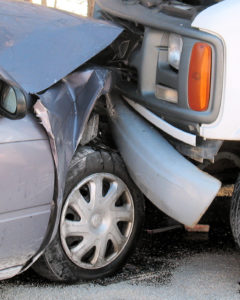Virginia Distracted Driving
April 23, 2021 by Jean Humbrecht
The number of car accidents resulting from Virginia distracted driving increases every year. During National Distracted Driving Awareness month, which occurs every April, organizations focus on educating Americans about the dangers of distracted driving and promoting safe driving habits.
Virginia Distracted Driving


Virginia Distracted Driving Results in Many Unnecessary Car Accidents
A major contributor to many car accidents in Virginia is distracted driving. These distractions include cell phones, in-vehicle technology, passengers, alcohol or drug use, eating and drinking, grooming, adjusting volume or music, looking at a GPS, fatigue and stress, among other things. Teenagers are at an even higher risk of being involved in a car accident because of texting or other distracted driving in Virginia
For more information on causes of Virginia distracted driving, read the Virginia Tech Transportation Institute article linked here.
Types of Distracted Driving
There are four kinds of distractions while driving-visual, auditory, manual, and cognitive.
Visual distractions occur when a driver is looking at something instead of the road. Auditory distractions are those caused by listening to something. Manual distractions are caused by doing something with one’s hands other than using the steering wheel or something in the car required for driving. Cognitive distractions include thinking about something unrelated to driving.
For more information on the different types of distracted driving, read the article by National Today linked here.
Cell Phone Use is a Major Contributor to Virginia Distracted Driving
Cell phone use is a major factor in traffic accidents in Virginia.
Many people (mistakenly) think that they are safer while driving because of in-vehicle technology installed in most newer cars. This technology includes the ability to call or send a text without having to pick up one’s phone.
Interestingly, studies show that even if drivers use hands-free technology to use their cell phones while driving, they are still less likely to notice potential hazards on and around the road due to their distraction.


A driver is also more likely to be the victim of a crime if he or she is distracted in any way on the road. This is because the driver is not paying attention to his or her surroundings, no matter how much the driver is making a conscious effort to do so.
In efforts to increase safety on the roads, Virginia has enacted a law prohibiting drivers from having a cell phone in their hands AT ALL while driving. This is usually referred to as the Texting While Driving law.
For more information on the Virginia law prohibiting using a handheld personal communication device while driving, click here.
Ways to Prevent Distracted Driving in Virginia
There are many ways drivers can reduce the risks associated with distracted driving in Virginia, including but not limited to using cell phone blocking apps that prevent incoming or outgoing calls or texts while driving, pulling over to make a phone call or send a text, having a passenger send or respond to a text message, putting the phone away while driving, driving at the speed limit, not driving under the influence of alcohol or drugs, and continuing to look in rearview mirrors and blind spots.
***DISCLAIMER: THE MATERIAL AND INFORMATION CONTAINED IN THIS POST, ON ANY PAGES ON THIS WEBSITE, AND ON ANY PAGES LINKED FROM THESE PAGES, ARE FOR GENERAL INFORMATION ONLY AND NOT LEGAL ADVICE. YOU SHOULD CONSULT A LICENSED ATTORNEY IN YOUR JURISDICTION BEFORE RELYING ON ANY OF THE INFORMATION CONTAINED ON THESE PAGES. SENDING EMAIL TO OR VIEWING INFORMATION FROM THIS WEBSITE DOES NOT CREATE AN ATTORNEY-CLIENT RELATIONSHIP***





